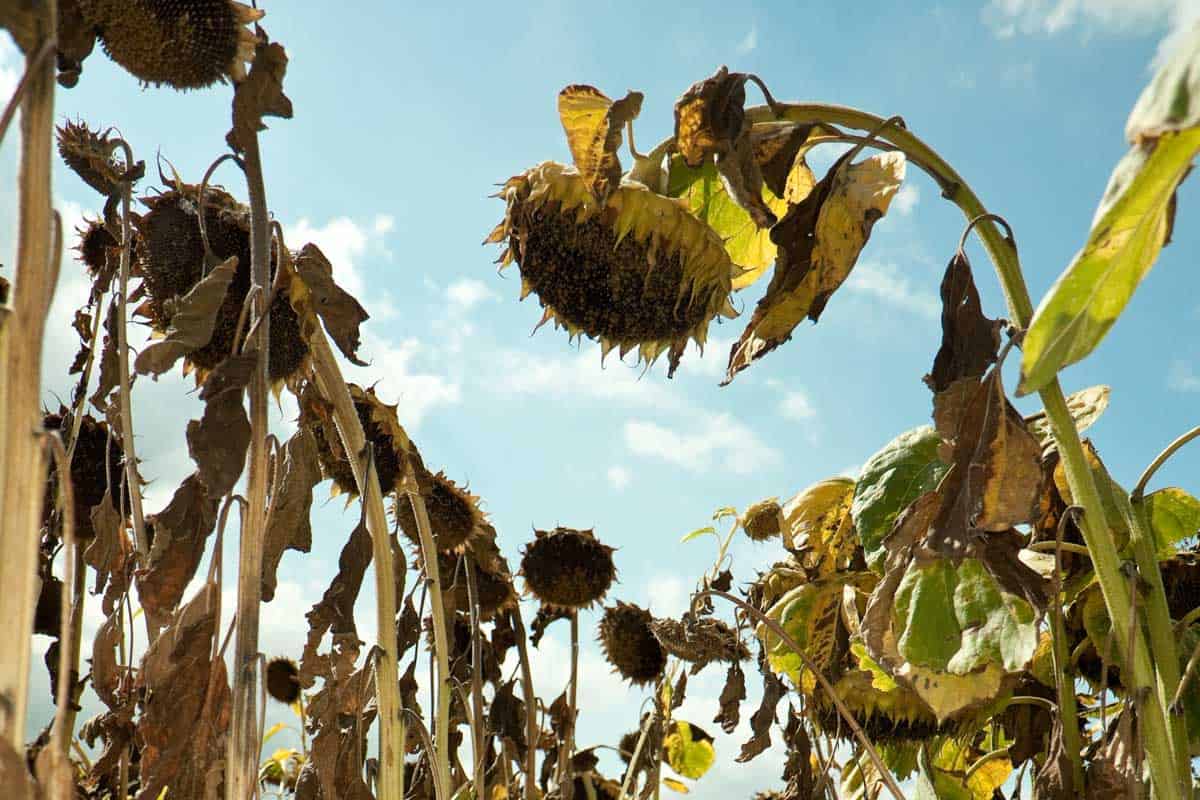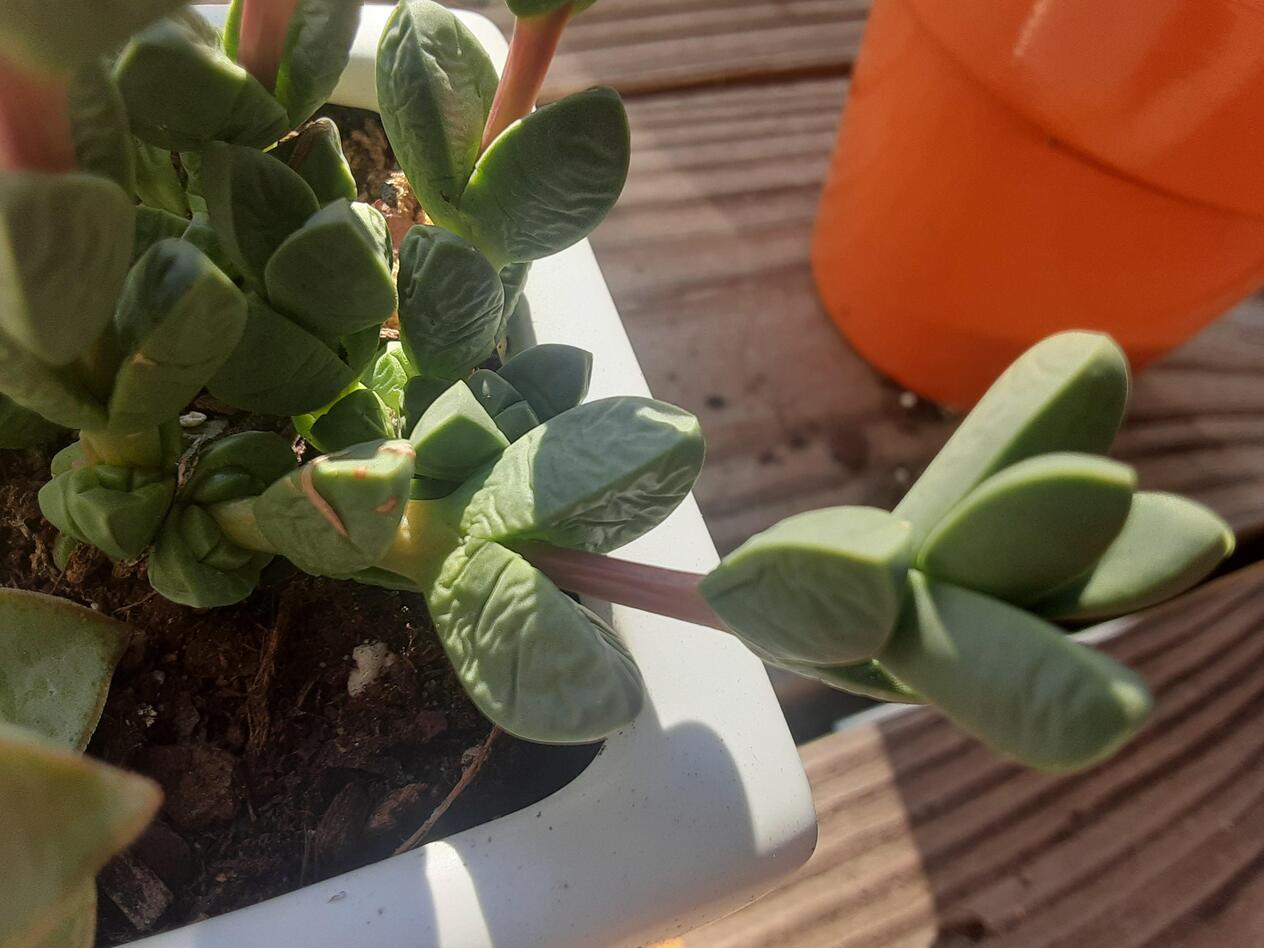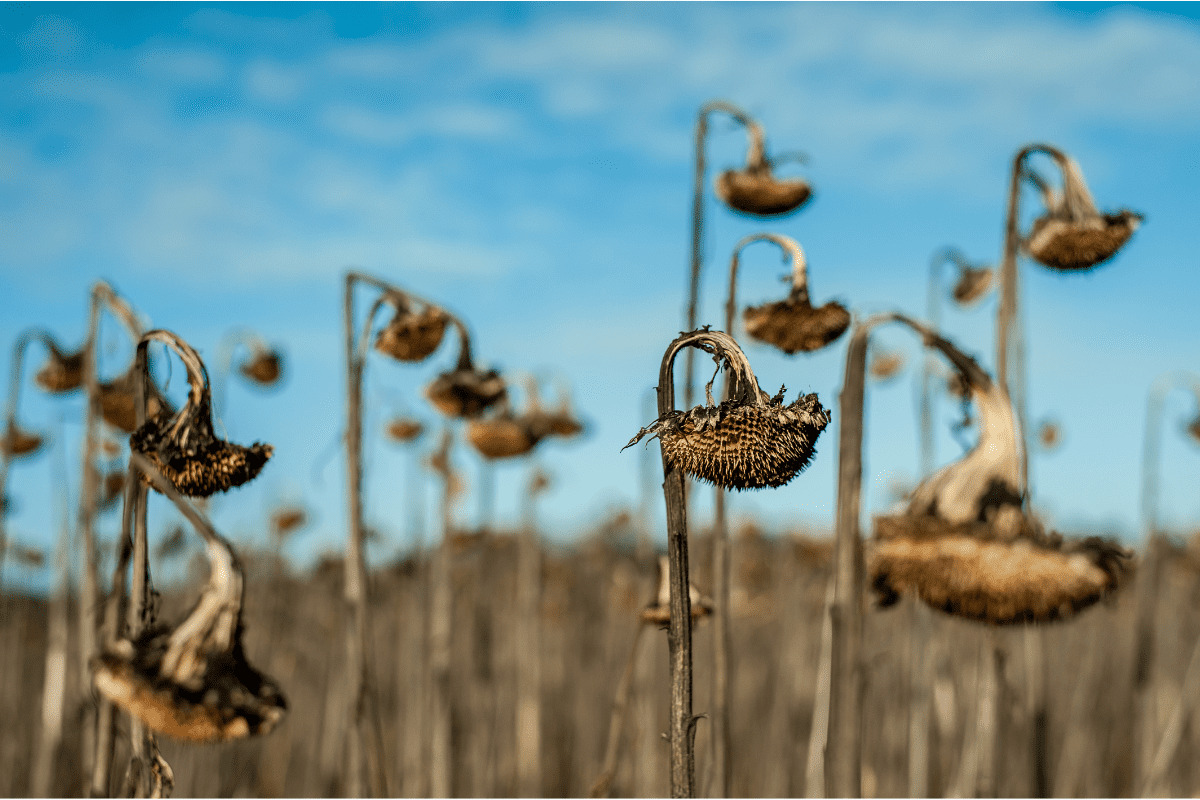Home>Types of Gardening>Ornamental Gardening>Why Are My Sunflowers Dying


Ornamental Gardening
Why Are My Sunflowers Dying
Modified: January 22, 2024
Discover expert tips for maintaining healthy sunflowers and preventing common issues in ornamental gardening. Learn how to revive your sunflowers and keep them thriving.
(Many of the links in this article redirect to a specific reviewed product. Your purchase of these products through affiliate links helps to generate commission for Chicagolandgardening.com, at no extra cost. Learn more)
Table of Contents
**
Introduction
**
Sunflowers, with their radiant blooms and towering presence, are a quintessential symbol of summer and vitality in ornamental gardens. The sight of these majestic flowers swaying in the gentle breeze can uplift the spirits of any gardening enthusiast. However, the heartbreak of witnessing sunflowers wilt and decline can be truly disheartening. If you've found yourself wondering, "Why are my sunflowers dying?" you're not alone. Understanding the potential causes and remedies for declining sunflowers is essential for nurturing these stunning plants to their full potential.
Sunflowers, scientifically known as Helianthus annuus, are annual plants that belong to the Asteraceae family. They are renowned for their remarkable height, with some varieties reaching up to 12 feet or more. The iconic yellow petals surrounding a dark center create a striking visual display that attracts pollinators and admirers alike.
Whether you've meticulously planted a row of sunflowers along a garden border or nurtured a single specimen in a container, the gradual decline of these vibrant blooms can be perplexing. However, with a deeper understanding of sunflower planting, care, and potential issues, you can unravel the mystery behind their decline and take proactive measures to restore their vitality.
In this comprehensive guide, we will delve into the various factors that can contribute to the decline of sunflowers. From planting and care tips to common problems that afflict these plants, we will explore the telltale signs of sunflower distress and equip you with practical remedies to revive them. By the end of this journey, you will possess the knowledge and insights needed to address the question, "Why are my sunflowers dying?" and restore these botanical marvels to their former glory.
Sunflower Planting and Care
Successfully cultivating healthy sunflowers begins with strategic planting and attentive care. When selecting a location for sunflower planting, prioritize an area that receives ample sunlight, ideally six to eight hours per day, and offers well-draining soil. Sunflowers thrive in nutrient-rich soil, so amending the planting site with organic matter, such as compost, can provide an optimal foundation for their growth.
Before sowing sunflower seeds, consider the mature height of the chosen variety and provide adequate spacing between plants to prevent overcrowding. Taller varieties may necessitate staking to support their robust stems and prevent wind damage. When planting sunflower seeds directly into the soil, ensure a depth of 1 to 1.5 inches and space them approximately 6 to 18 inches apart, depending on the specific cultivar's growth habits.
Upon germination, young sunflower seedlings require consistent moisture to establish strong root systems. While sunflowers exhibit a degree of drought tolerance once established, regular watering during the initial growth stages is crucial for their vigor. Mulching around the base of sunflowers can aid in moisture retention and inhibit weed growth, contributing to overall plant health.
Applying a balanced fertilizer during the early stages of growth can bolster sunflower development, but excessive nitrogen should be avoided to prevent an overabundance of foliage at the expense of flower production. As the sunflowers mature, deadheading spent blooms can encourage continuous flowering and prevent the plant from expending energy on seed production.
By adhering to these fundamental principles of sunflower planting and care, you can establish a solid foundation for their well-being and mitigate potential factors that contribute to their decline.
Common Sunflower Problems
While sunflowers are generally resilient, they are susceptible to a range of issues that can impede their growth and vitality. Familiarizing yourself with these common problems is essential for promptly identifying and addressing any signs of distress in your sunflower plants.
-
Pests: Aphids, caterpillars, and weevils are among the pests that may target sunflowers, causing damage to foliage and impeding growth. Regular inspection of the plants for signs of pest infestation, such as distorted leaves or visible insects, can facilitate early intervention.
-
Diseases: Fungal diseases, including downy mildew and powdery mildew, can afflict sunflowers, manifesting as discolored or wilting foliage. Proper air circulation and avoiding overhead watering can help mitigate the risk of fungal infections.
-
Nutrient Deficiencies: Inadequate levels of essential nutrients, such as nitrogen, phosphorus, or potassium, can manifest as stunted growth, yellowing leaves, or reduced flowering. Conducting a soil test and supplementing with appropriate fertilizers can rectify nutrient deficiencies.
-
Environmental Stress: Extreme heat, prolonged drought, or waterlogged soil can subject sunflowers to environmental stress, leading to wilting, reduced flowering, or overall decline. Implementing appropriate irrigation practices and providing shade during intense heat can mitigate these stressors.
By remaining vigilant and promptly addressing these common problems, you can safeguard the health and resilience of your sunflowers, setting the stage for their continued growth and vibrancy.
Identifying the Cause of Sunflower Decline
When confronted with ailing sunflowers, pinpointing the precise cause of their decline is pivotal for implementing targeted remedies. An astute assessment of the plants and their growing conditions can shed light on the underlying factors contributing to their distress.
Visual Inspection: Conduct a thorough visual examination of the sunflowers, paying close attention to the foliage, stems, and blooms. Look for signs of pest infestation, such as chewed leaves or webbing, as well as indications of diseases, including discolored or distorted foliage.
Soil Analysis: Assess the quality of the soil in which the sunflowers are growing. Consider conducting a soil test to evaluate nutrient levels, pH balance, and drainage capacity. Nutrient deficiencies or imbalances can profoundly impact the plants’ health and vitality.
Environmental Factors: Reflect on recent weather patterns and environmental conditions that may have influenced the sunflowers. Extreme temperatures, insufficient or excessive moisture, and inadequate sunlight can exert stress on the plants, leading to observable signs of decline.
Observing Growth Patterns: Take note of the sunflowers’ growth patterns and any deviations from their expected development. Stunted growth, wilting, or a reduction in flowering can provide valuable clues regarding the specific challenges the plants are facing.
By meticulously scrutinizing the visual cues, soil quality, environmental influences, and growth patterns of the sunflowers, you can begin to unravel the mystery behind their decline and lay the groundwork for targeted interventions to revive their health and vigor.
Remedies for Dying Sunflowers
Addressing the decline of sunflowers demands a proactive approach that encompasses targeted remedies tailored to the specific challenges affecting the plants. By identifying the underlying causes of their distress, you can implement strategic interventions to revive their vitality and promote robust growth.
-
Pest Control: If pest infestation is detected, consider employing natural or organic pest control methods, such as insecticidal soaps or neem oil, to mitigate the presence of aphids, caterpillars, or weevils. Regularly inspect the plants and promptly address any signs of pest activity to prevent further damage.
-
Disease Management: Fungal diseases can be managed through cultural practices, such as ensuring adequate air circulation around the plants and avoiding overhead watering. Additionally, applying fungicidal treatments approved for ornamental plants can help combat fungal infections and protect the sunflowers from further harm.
-
Nutrient Enhancement: Addressing nutrient deficiencies or imbalances in the soil is crucial for restoring the vigor of sunflowers. Based on the results of a soil test, amend the soil with appropriate fertilizers to rectify any deficiencies and promote healthy growth and flowering.
-
Environmental Adaptations: In response to environmental stressors, such as extreme heat or drought, adjust your gardening practices to provide supplemental irrigation during dry spells and offer shade or protection from intense sunlight. These adaptations can alleviate stress on the sunflowers and facilitate their recovery.
By implementing these targeted remedies and adapting your care practices to the specific needs of the ailing sunflowers, you can instill renewed vitality and resilience in these botanical treasures, fostering their resurgence and continued flourishing.
Conclusion
As you embark on the journey of nurturing sunflowers in your ornamental garden, it is essential to approach their care with attentiveness and a keen eye for potential challenges. By understanding the fundamental principles of sunflower planting and care, remaining vigilant against common problems, and adeptly addressing the causes of decline, you can cultivate thriving sunflowers that grace your garden with their resplendent blooms.
When faced with the disheartening sight of ailing sunflowers, remember that their resilience and capacity for rejuvenation are remarkable. Through astute observation, strategic interventions, and a nurturing touch, you can guide these botanical wonders back to robust health and vibrant splendor.
Armed with the insights gleaned from this guide, you possess the knowledge and acumen to unravel the mystery behind declining sunflowers and foster their resurgence. As you tend to these botanical marvels, may your efforts be rewarded with a flourishing display of sunflowers, standing tall and radiant in the embrace of your garden.







